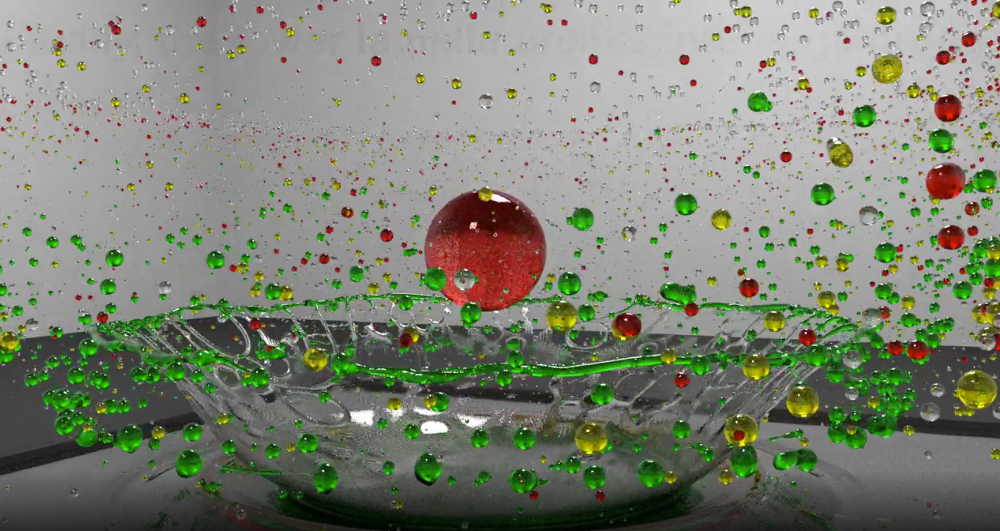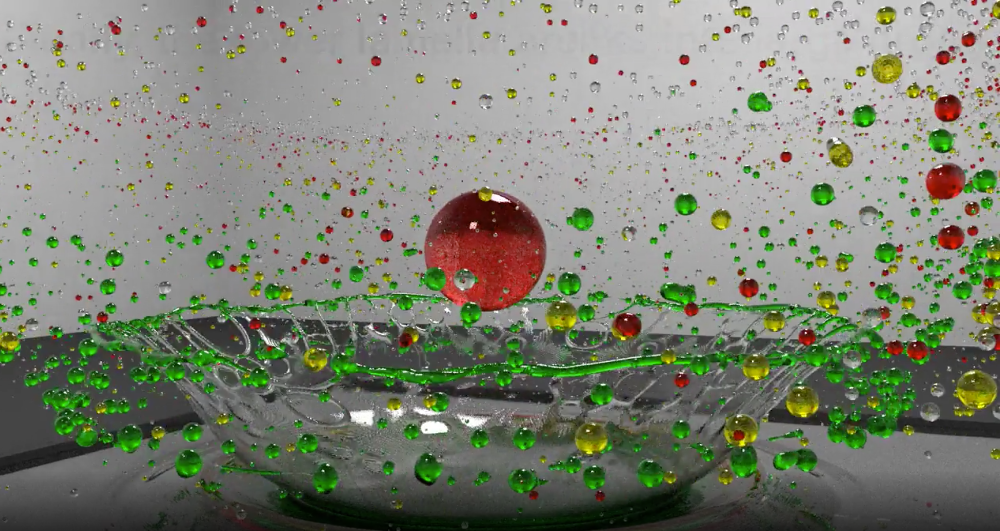Singing, Yeast, and Diesel Fuel Capture Video Prize
The APS Division of Fluid Dynamics has announced the 2020 winners of its annual Gallery of Fluid Motion video and poster contest. Below are the video winners of the Milton van Dyke Award, which recognizes the three top videos and the three top posters.
Opera Singer’s Airflow
During this pandemic, it isn't easy to be a singer. Singing can effectively spread the virus that causes COVID-19, so a team of researchers studied airflow during singing in order to help the Metropolitan Opera orchestra determine guidelines for a safe work environment.
Howard Stone of Princeton University and his colleagues used an infrared camera to image airflow near a singer’s mouth and a flow meter to track the volume of air expelled per second. First, the team imaged and measured themselves while singing, breathing, or speaking, and found that singing produced more airflow than speaking.
Next, the team turned the camera and flow meter on professional opera singer Isabel Leonard. Compared with the amateurs, Leonard’s airflow during singing was less than during speaking and was also more controlled. “It’s amazing to see how the singer is able to impose a constant flow rate, whereas if you speak, there are a lot of fluctuations,” says Princeton team member Philippe Bourrianne. The team continues to observe both singers and wind instrumentalists in their lab and expects to provide data that will inform decisions regarding distancing between performers and ventilation techniques.
Yeast in Motion
Yeast in the lab “smells really good,” says Severine Atis, of the University of Chicago, “like fresh bread or beer.” Like a lot of researchers, Atis studies yeast cells—which divide every hour or so—because they can rapidly reveal the effects of natural selection. Atis and her Harvard University colleagues wanted to observe clumps of yeast cells (colonies) growing in a liquid because life began in the ocean, not in a gel like that found in a typical petri dish. To allow colonies to grow normally on a liquid, Atis developed a high-viscosity growth medium.
But then “biology did something we were not expecting,” Atis recalls. Under certain conditions, parts of the colony would slowly drift away, which was strange, because the team thought that the high viscosity would prevent any fluid flow. The team ultimately realized that, as a floating colony metabolizes glucose, it creates a low-glucose and thus low-density region of fluid underneath. When this volume tries to spread out across the liquid surface, it generates a convection flow that pulls the growing colony apart, as the team reported last year (see Viewpoint: Microbial Expansion Shaped by Fluid Flows). The team is considering the possibility that the spreading behavior is an evolutionary adaptation that allows groups of cells to move toward regions with more nutrients.
Before she left Harvard for Chicago, Atis thought about proposing an exhibit of yeast images at a local brewpub. The display “would be very fitting, especially in the Cambridge-Boston area, because people who go to local breweries there are all geeks, and they all want to know about the science.”
A Splash of Diesel Fuel
“My jaw was on the floor,” recalls Mehdi Raessi, of the University of Massachusetts, Dartmouth, describing the first time he saw a simulation of splashing diesel fuel produced by David Markt, his graduate student. He was impressed by the lifelike beauty of the movies, which showed fuel drops hitting a surface and producing secondary droplets.
Raessi and Markt’s work is aimed at helping engine manufacturers better simulate the events inside of a combustion chamber. The manufacturers use so-called submodels of various elements of the process, but current submodels of fuel injection don’t accurately capture the splashing of injected fuel and the resulting tiny droplets. Manufacturers want these secondary droplets to be as small as possible, which reduces the amount of leftover fuel after combustion and improves efficiency.
The videos are so realistic that they often lead to confusion, says Markt. Despite being honest about the sources of the videos, “anytime I’ve presented these results, I’ve had audience members that come up to me and ask if these images were experimental.”
– David Ehrenstein and Ruma Arabatti
David Ehrenstein is the Focus Editor for Physics, and Ruma Arabatti is a Physics science writing intern.





